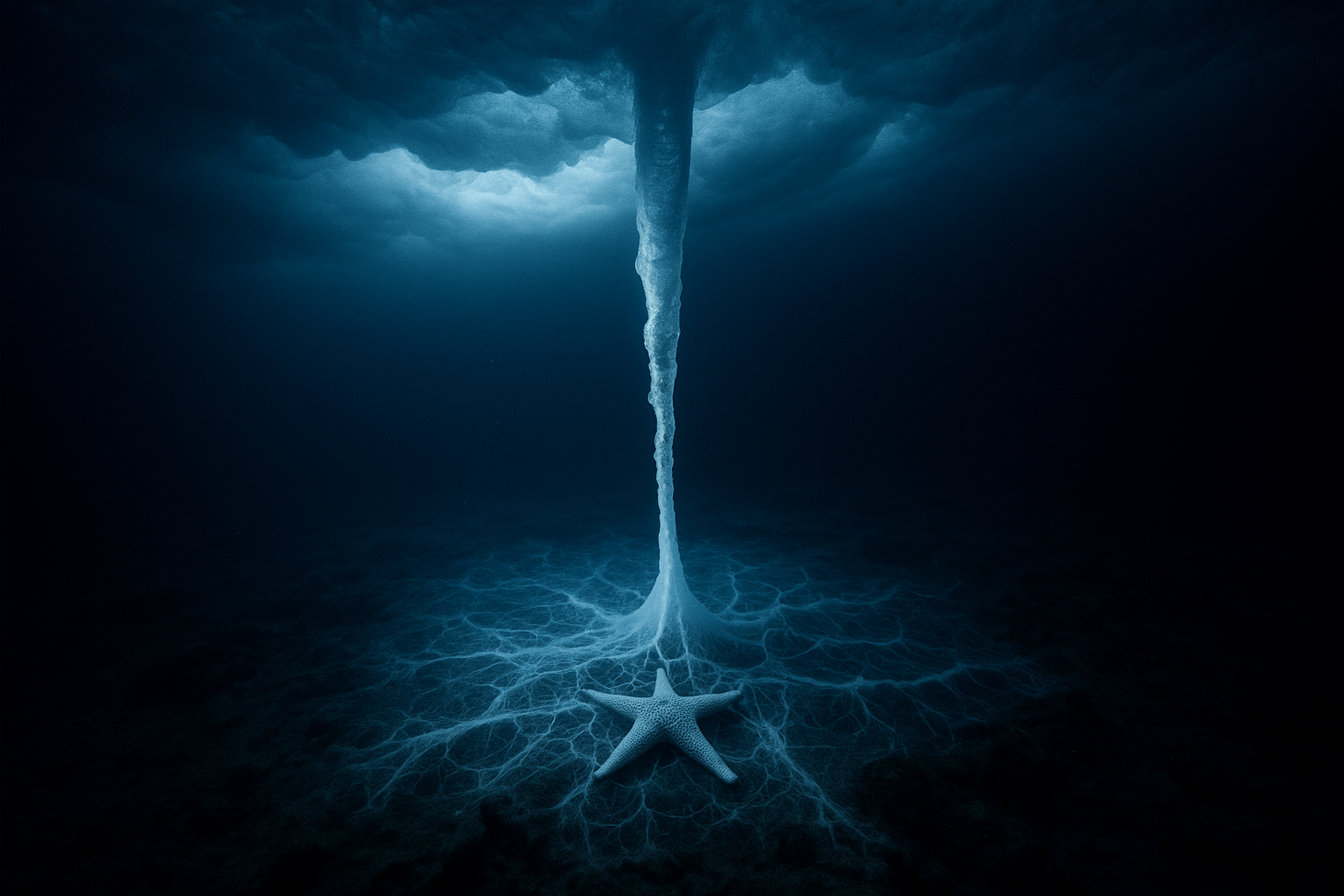This is not an icicle made of ordinary frozen water. A brinicle is a hollow tube of ice that forms around a descending plume of incredibly cold, super-saline water. It is a unique and mesmerizing feature of our planet’s physical geography, born from the extreme conditions found only at the poles.
A Recipe for an Underwater Icicle
The creation of a brinicle is a fascinating lesson in physics and chemistry, requiring a precise set of ingredients and conditions found in the Arctic and Antarctic Oceans. The process, known as brine rejection, is the engine that drives its formation.
The Key Ingredients:
- Frigid Air: The process begins when the air temperature above the polar sea ice plummets, often to -20°C (-4°F) or colder.
- Ocean Water: The ocean below, while freezing, is significantly “warmer” at around -1.9°C (28.6°F). This stark temperature difference is crucial.
- Sea Ice Formation: As the intensely cold air chills the ocean surface, new sea ice rapidly forms from below.
The Formation Process:
When seawater freezes, an interesting thing happens. The crystal structure of ice cannot accommodate salt molecules. As a result, the salt is forced out, or “rejected”, from the freezing water. This expelled salt doesn’t just disappear; it becomes concentrated in the liquid water trapped in channels and pockets within the newly formed sea ice.
This trapped water is now a brine—a solution far saltier, and therefore denser, than the seawater below. It also carries the extreme cold from the surface air, making it colder than the freezing point of the surrounding ocean.
When this super-cold, super-dense brine finds a crack or weakness in the sea ice, it begins to leak out and sink. Because it is so much colder than the seawater it encounters on its descent, it instantly freezes a thin layer of that less-salty water around it. As the brine plume continues to sink, this ice sheath grows with it, forming a hollow, downward-growing tube—the brinicle.
Geographical Hotspots: The Brinicle Belt
Brinicles are exclusively a polar phenomenon, confined to the iciest regions of our planet. Their existence is a direct consequence of the unique geography and climate of the high latitudes.
The most famous and well-documented brinicles have been observed in the Antarctic, particularly in the calm, sheltered waters of McMurdo Sound in the Ross Sea. It was here, near the USA’s McMurdo Station and New Zealand’s Scott Base, that a BBC film crew filming for the “Frozen Planet” series captured the first-ever time-lapse footage of a brinicle forming and reaching the seabed in 2011. The stable, thick sea ice and extremely cold, dry Antarctic winters provide perfect laboratory-like conditions for their growth.
While less frequently filmed, brinicles also form in the Arctic Ocean. They occur in areas where multi-year sea ice provides a stable platform and the seasonal temperature drop is severe enough to drive the brine rejection process. These icy fingers can be found descending into the waters off the coasts of Northern Canada, Greenland, and Siberia. However, the more dynamic and mobile nature of Arctic sea ice compared to the vast ice shelves of Antarctica can make their formation more sporadic.
The “Finger of Death” Reaches the Seafloor
The journey of the brinicle is slow and deliberate, but its arrival on the seafloor is catastrophic for the creatures that live there. The true “Finger of Death” moment occurs when the ice tube makes contact with the bottom.
Once it touches down, the tube ruptures, and the dense, freezing brine, which is still sinking, pools and flows outwards across the seabed. This creeping underwater flow of super-cold liquid is a death sentence for any slow-moving benthic life it encounters. Starfish, sea urchins, sea anemones, and marine worms, unable to escape the advancing brine, are frozen solid where they stand. The brine’s extreme salinity and sub-zero temperature cause ice crystals to instantly form within and around their bodies.
The time-lapse footage captured by the BBC shows this grim process in stark detail. A web of ice rapidly spreads from the base of the brinicle, encasing a group of starfish and sea urchins in a frozen tomb. What was once a patch of living seafloor becomes a ghostly white tableau of death, a stark reminder of the raw power of nature in these extreme environments.
A Human and Scientific Perspective
While brinicles pose no direct threat to human settlements—they occur far from any major city, in the deep cold of the polar oceans—they are of immense interest to science. They are not just a curiosity; they are a window into fundamental planetary processes.
For oceanographers, brinicles are a small-scale, visible model of thermohaline circulation—the global “conveyor belt” of ocean currents driven by differences in temperature (thermo) and salinity (haline). The sinking of cold, salty water at the poles is the primary engine of this system, which regulates climate around the world. A brinicle is a miniature, concentrated version of this process.
Furthermore, the existence of brinicles has profound implications for astrobiology—the search for life beyond Earth. Scientists speculate that similar brine-rejection processes could occur beneath the icy shells of moons like Jupiter’s Europa or Saturn’s Enceladus. These worlds are thought to have subsurface liquid water oceans, and if brinicle-like structures form, they could create unique chemical environments and transport minerals, potentially creating niches where life could arise or be sustained, even without sunlight.
The brinicle is a powerful symbol of the Earth’s polar regions: stunningly beautiful, governed by extreme physics, and teeming with processes we are only just beginning to understand. It is a silent, icy killer that reminds us of the vast, alien-like wonders hidden in the deepest, coldest corners of our own world.
